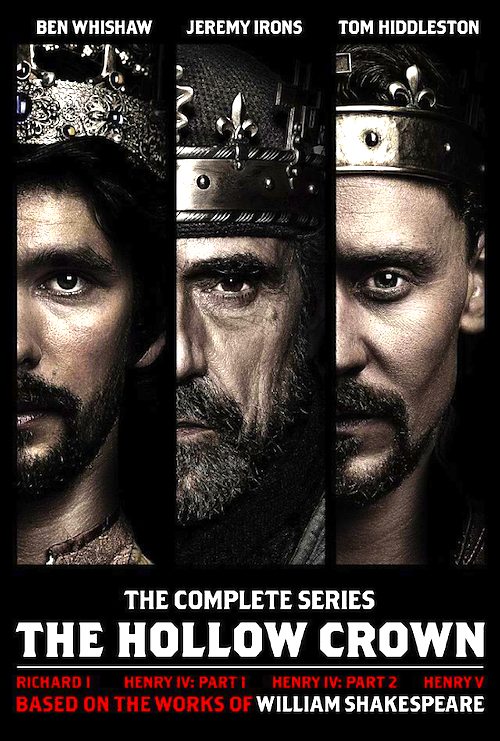By Joe Bendel. The House of Plantagenet had a good run, but their dynasty would not last forever. You can blame Richard II. His fall and the rise of his Lancaster cousins provided ample inspiration for Shakespeare’s three king-four play cycle known as the Henriad. Executive producer Sam Mendes and three of Britain’s leading stage directors adapted the Richard and Henry plays for television as The Hollow Crown, which premieres on PBS this Friday as part of the current season of Great Performances.
Richard II begins with the title monarch on the throne, but that may soon change. Callous and erratic, Richard is a sad excuse for king. Nonetheless, the nobility has maintained their loyalty. Richard’s own actions will drive many lords into rebellion, starting with the precipitous banishment of Henry Bolingbroke. When the King confiscates the estate of his late uncle, Bolingbroke’s father, John of Gaunt, he pushes the Earl of Northumberland and his associates into rebellious conspiracy.
A bit of a slow starter, Richard II might be the weakest link of the Crown. However, it exceeds viewer expectations for one of the marquee Henriad highlights, when Patrick Stewart knocks John of Gaunt’s “This England” soliloquy out of the park. The stout Rory Kinnear and David Morrissey also bring an appropriately Shakespearean physicality to Bolingbroke and Northumberland, respectively. Unfortunately, Ben Whishaw’s sickly, petulant presence poorly serves the villainous Richard. Even more problematic is Richard II director Rupert Goold’s depiction of the deposed tyrant through Christ-like imagery.
 Bolingbroke is now Henry IV, but he plays more of a supporting role in the two plays that bear his name: Henry IV Parts 1 and 2. The King has an heir to succeed him, but has little confidence in the free-spirited Prince Hal. The future Henry V would rather carouse with the disreputable Sir John Falstaff than worry about affairs of state.
Bolingbroke is now Henry IV, but he plays more of a supporting role in the two plays that bear his name: Henry IV Parts 1 and 2. The King has an heir to succeed him, but has little confidence in the free-spirited Prince Hal. The future Henry V would rather carouse with the disreputable Sir John Falstaff than worry about affairs of state.
Succeeding Kinnear as Henry IV, Jeremy Irons gives one of his best performances in years, acutely conveying the burdens of guilt, command, and fatherhood. Likewise, Tom Hiddleston relishes the roguishness of Prince Hal, while also convincingly growing in stature once Henry V ascends the throne. As director of both parts of Henry IV, Richard Eyre makes amends for misfiring with The Other Man. He seems to love Falstaff even more than Welles did, but Simon Russell Beale looks so haggard and dissipated as the jolly fellow, viewers will fear he might keel over well before his character’s spirit is broken.
Renouncing his wild past, Henry V turns his attention towards France in the Henriad’s conclusion, which should particularly interest Francophiles because of the presence of Lambert Wilson as the King of France and Mélanie Thierry as his daughter, Princess Katherine. Hiddleston’s courtship scene with Thierry has considerable charm, but Henry V director Thea Sharrock strangely underplays the St. Crispin’s Day speech, perhaps hoping to avoid comparison with Branagh’s rendition.
Shot on some notably picturesque locations, Hollow Crown opens up Shakespeare quite cinematically. While there is a considerable editorial hand at work, the language is never dumbed down. It is a smart way to present the Bard on television, with discrete productions that still have the continuity of a mini-series. The all-star cast should be of particular interest to fans of Downton Abbey (due to the too-briefly seen Michelle Dockery and Iain Glen). It is a great looking period piece, buttressed by a number of fine performances. Recommended for patrons of classical theater and fans of British television, The Hollow begins tonight (9/20) and continues for the next three Fridays on most PBS outlets nationwide.
LFM GRADE: A-
Posted on September 20th, 2013 at 1:25pm.